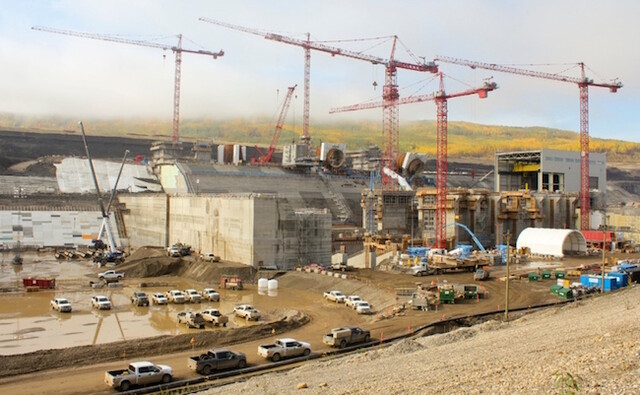
BC megaprojects could protect from possible recession
During the Great Recession of 2008-09, British Columbia was insulated somewhat from economic disaster by billions of dollars spent on major public works projects leading up to the 2010 Winter Olympics.
Spending on big projects like the Canada Line ($2 billion), the Richmond Olympic Oval ($145 million) and Sea-to-Sky Highway ($789 million) helped buffer B.C.’s economy from the steep downturn.
And there is plenty of cushioning again, should the North American economy slip into recession in 2020, as some forecasters have predicted.
In 2019, there was general slowing of global economic growth, and in B.C., exports from forestry and mining were down in the first three quarters by 18% and 5.6%, respectively, according to Central 1 Credit Union.
But again, major private-and public-sector capital projects – from pipelines to new subway lines and hospitals – will either start or be well underway in B.C. in 2020, providing a timely cushion should the U.S. and Canada slide into recession.
“One of the big buffers already within our forecast is that we do have substantial capital investment spending,” said Bryan Yu, deputy chief economist for Central 1 Credit Union. “The big ones are the LNG Canada facility and the associated pipelines. Adding to that, it’s ongoing work on things like the Site C dam.”
Central 1 is projecting B.C.’s economic growth will be 3% in 2020 – 1.5% higher than the Canadian average. This is despite a dramatic downturn in the forestry sector. BuildForce Canada forecasts that major projects in B.C. will create 13,000 new construction jobs between now and 2021.
Central 1 estimates that without major energy projects like LNG Canada and Site C dam, B.C.’s growth next year would likely be 1% lower, Yu said. The LNG Canada project alone accounts for about 0.7% GDP growth next year.
As of October 2019, 4,823 workers were employed on the $10 billion Site C dam project in the Peace River region. Roughly 1,000 workers were employed in the early stage of construction of the $40 billion LNG Canada project in Kitimat, and another 1,000 are employed on the associated $6.6 billion Coastal GasLink natural gas pipeline.
About 2,200 people have been hired to date for the $7.4 billion to $9.3 billion Trans Mountain pipeline expansion, although those workers are spread across both B.C. and Alberta.
Hundreds of workers are also employed on the $460 million Central Utilities Building project at Vancouver International Airport, which is part of a $9.1 billion expansion taking place over the next two decades.
In addition to big energy projects, preliminary work is also expected to begin on some large public works projects in 2020, like the $1.9 billion new St. Paul’s Hospital, the $2.8 billion Millennium Line Broadway extension, the $1.4 billion Pattullo Bridge replacement and the $600 million Kicking Horse Pass widening project.
“We will start seeing more construction work occurring through this year as we’re ramping up to the full-on construction stage in late 2020, 2021,” Yu said.


